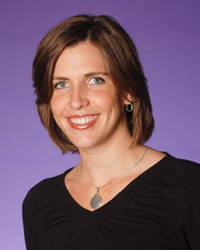Do TCU faculty routinely give their cell phone numbers to students? Is it the norm at TCU for the average undergraduate student? Is this what our students and administration expect?
This conversation began over lunch during the Koehler Center faculty focus lunch last semester. A professor had just overheard a Monday at TCU student leader tell a group of excited high school seniors, “Our faculty give their cell phone numbers to their classes. You can contact them any time.” Some faculty at our table considered this fairly normal while others believed it was highly unusual. Personally, my junior-and senior-level students enrolled in the dietetics programs in our department have my cell phone number. I ask them to contact me if there is an emergency. I give examples, such as if they are too sick to make it to a site where a preceptor for our program expects them or if there is another issue that they feel is urgent. I’ve never felt that any one of the students has abused what I consider to be a privilege. However, I also specifically ask them not to text or call me late at night to ask me something that can wait until the next day or can easily be discussed during office hours, over my office phone, or via email. I have a young family and feel these boundaries are healthy and appropriate.
While I frequently respond to emails late at night, I also feel that emails are easy to postpone answering without fear of forgetting to respond altogether. To be clear: it is not that I dislike the thought of a student texting me. I dislike texting in general. I am prone to miss or forget to respond to texts from my husband, siblings, and friends. They know me well and are not likely to think that I am ignoring them. It may stand to reason, then, that until the conversation at the faculty focus lunch, I never considered giving my cell number to the ~150 students enrolled in the lecture course I was teaching.
At the end of last semester, I conducted a completely unscientific iClicker survey of students enrolled in said lecture class. Among the 93 respondents present the day before Thanksgiving break, 47% reported that they had been provided with TCU professors’ cell numbers. Of that 47%, only 19% had ever called or texted a faculty member. Interestingly, 43% of students reported that they wish they were provided with their professors’ cell numbers while 57% did not have the same desire. As faculty, we know student expectations can change quickly from one year to the next as the incoming class of scholars arrives, so it’s hard to anticipate our future students’ needs and wishes.
When asked his opinion on the matter, Dr. Phil Hartman, Dean of the College of Science and Engineering, shared that he includes his cell number on his syllabus because he encourages students to contact him outside of class. He revealed, “In practice very few, if any, do. Many will email instead.” Dean Hartman explained that although it works for him, he certainly respects the decision of other faculty not to share their cell numbers.
Provost Nowell Donovan stated that he believes it is a good practice for faculty to share their cell numbers with students. “We offer a 24/7 student experience at TCU.” The Provost provides his cell and home numbers to his students and went on to add, “Why not? Dealing with emergencies and problems is part of the expectation of a TCU teacher-scholar.”
Faculty members will eventually address these questions for themselves. Should faculty routinely provide all students with their cell phone numbers? Under what circumstances should faculty share personal numbers? Does this improve or impede student learning and independence? If shared, what parameters should be set regarding what times are acceptable to text or call and how quickly should students expect a response? Thankfully, we don’t have to know all the answers before we make our next set of syllabi.
 This article was written by Gina Hill, Department of Nutritional Sciences and 2014 Koehler Center Fellow, for the Spring 2014 Issue of Insights Magazine.
This article was written by Gina Hill, Department of Nutritional Sciences and 2014 Koehler Center Fellow, for the Spring 2014 Issue of Insights Magazine.